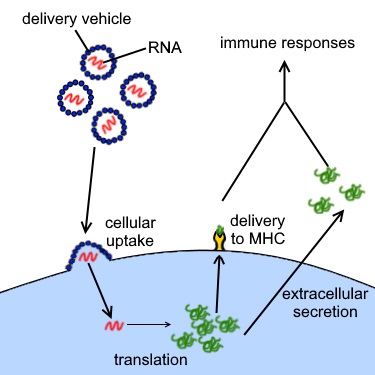Does a vaccine mean the end of this pandemic?
For this portfolio project, I will be focusing on the vaccine development process and how the developing vaccines each prepare the immune system to fight COVID-19. The goal will be to explore the stages of development, testing, and distribution to the public and how these new vaccines function. Since there has been recent progress with a few vaccine candidates, namely the Pfizer and Moderna vaccines, this blog post will be about the implications of vaccine distribution in coming months.
Firstly, a new vaccine does not mean that it will be safe for society to return to normal just yet. While we’re all definitely excited about the news of successful vaccine trials, the effects of vaccination are not immediate, and the goal of herd immunity will not be reached for a little while. Also, the vaccines have not been tested yet on children and pregnant women, and since women around childbearing age are highly represented in the population of health care workers, it is important that the vaccine work for pregnant women. With the trials so far, we do know that there have been no unexpected negative side effects to vaccination, just the typical mild ones such as injection-site soreness and fatigue.
So why is getting a vaccine so important? It’s true that none of the vaccines are 100% effective, but they have been proven to decrease the severity of symptoms. (Both vaccines have reported about 95% efficacy rates in preventing COVID-19.) There are many good reasons to get a vaccine. Not only will it protect you, but it will be a safer path than widespread infection to build herd immunity. Since the trials did not measure rates of infection, it remains unclear whether the vaccines prevent infection and transmission, though results from another vaccine’s trials suggest that it might somewhat protect against infection. Either way, the rate of subjects who became severely ill was lower for those vaccinated in these two prominent vaccines’ trials. The high rates of hospitalization are due to development of severe symptoms, so reducing symptoms would also help to slow the pandemic’s adverse effects.
So, we’ve seen that the Pfizer and Moderna vaccines are effective in reducing symptoms, but that brings us to another question. How do these vaccines work? Both of these vaccines are mRNA vaccines. This means that they deliver synthetic messenger RNA that is taken in by immune cells that then produce the spike protein, just as would happen if the cells came into contact with the actual virus. However, since it is just the proteins, there is no risk of getting infected with COVID-19 from the vaccine itself. The immune system will then recognize the protein as a foreign substance and develop an immune response and produce memory cells that will respond swiftly in the case of seeing that protein again. As we learned, the adaptive immune defense depends on the recognition of the epitope of a virus, in this case the spike protein. After first infection, the memory B and Tc cells that are produced via clonal expansion remain in the lymph nodes until the same virus attacks again. However, this mRNA vaccine removes the need for a first infection in developing adaptive immunity because the spike proteins are produced without the rest of the virus needing to be introduced.
Now, let’s imagine it’s a few months from now, and the distribution of vaccines has begun. Can we skip the precautions we have in place now? Do we still need social distancing and mask-wearing? Well, until most people are able to be vaccinated, it will be important to maintain safety protocols that reduce the spread. Even once somebody is vaccinated, they will need to follow guidelines, because it takes several weeks for the immune defense to build up, and both vaccines require a booster dose about a month after the first one. Also, we’ve already addressed the uncertainty about transmission after vaccination, so it’s best to err on the side of caution.
So, even though these vaccines may not be perfect, they will help control the pandemic. The main question that remains is how efficiently and fairly vaccines can be distributed to best reduce deaths and bring about an end to the pandemic.



Leave a Reply